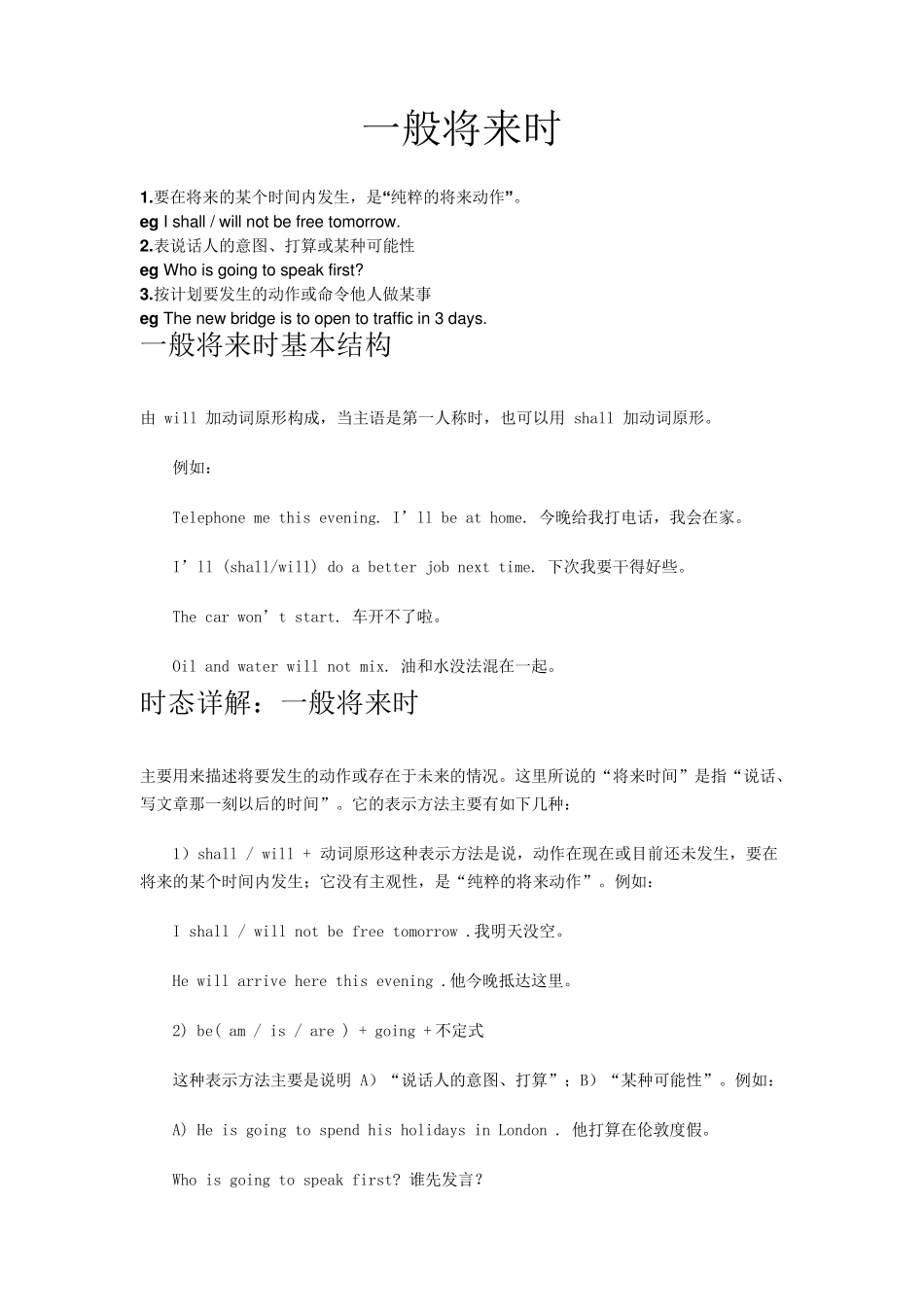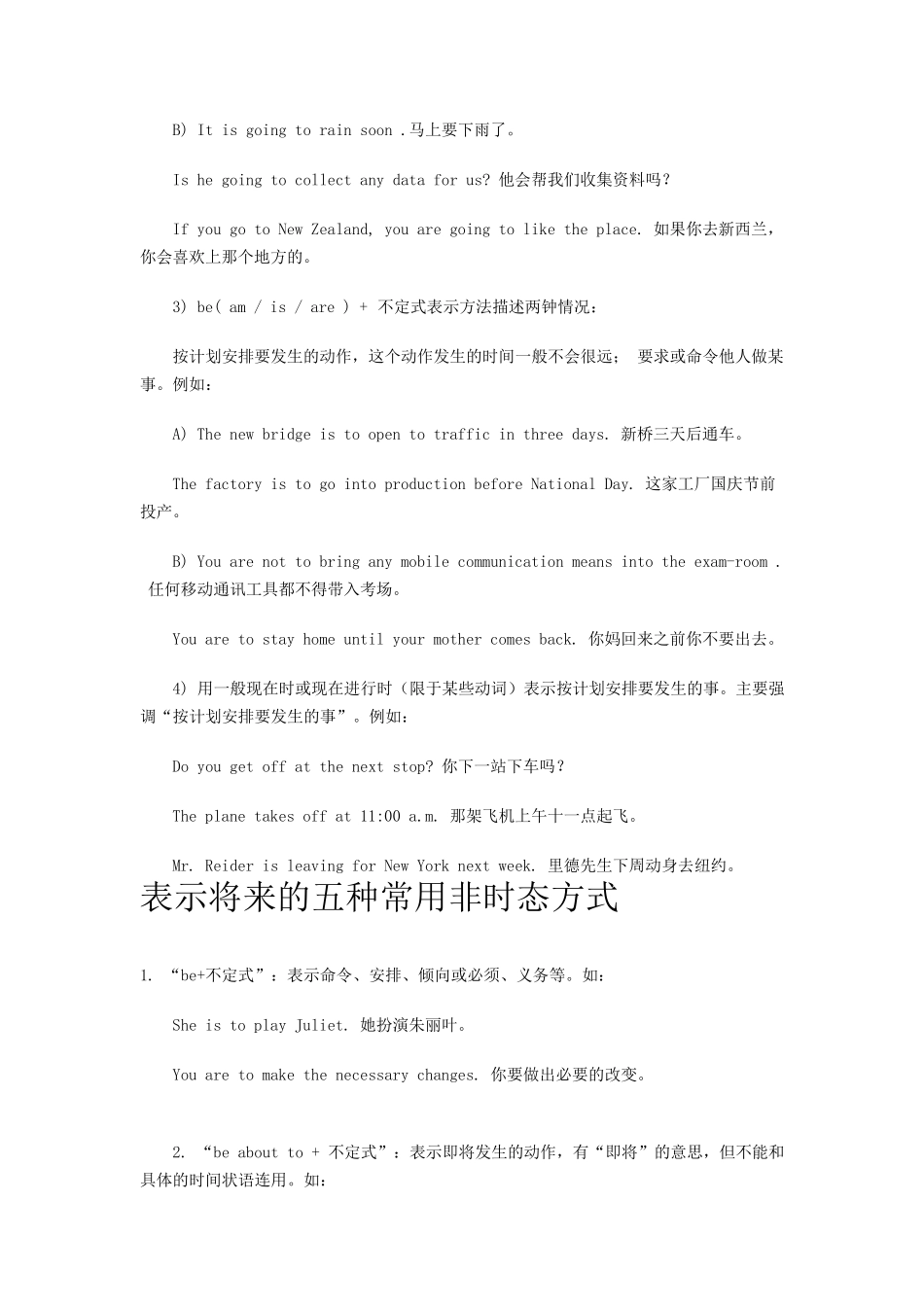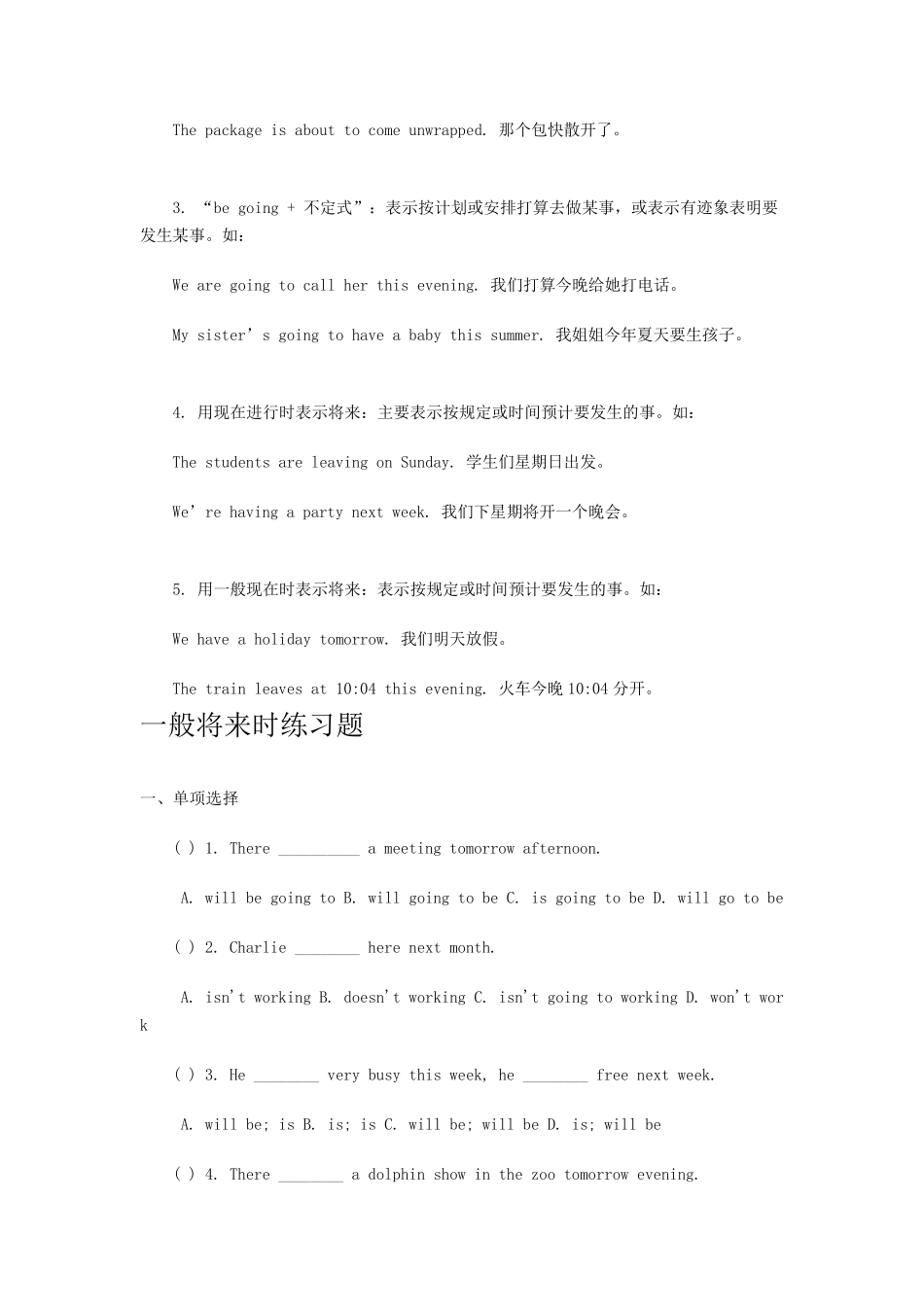一般将来时 1.要在将来的某个时间内发生,是“纯粹的将来动作”。 eg I shall / will not be free tomorrow. 2.表说话人的意图、打算或某种可能性 eg Who is going to speak first? 3.按计划要发生的动作或命令他人做某事 eg The new bridge is to open to traffic in 3 days. 一般将来时基本结构 由 will 加动词原形构成,当主语是第一人称时,也可以用 shall 加动词原形。 例如: Telephone me this evening. I’ll be at home. 今晚给我打电话,我会在家。 I’ll (shall/will) do a better job next time. 下次我要干得好些。 The car won’t start. 车开不了啦。 Oil and water will not mix. 油和水没法混在一起。 时态详解:一般将来时 主要用来描述将要发生的动作或存在于未来的情况。这里所说的“将来时间”是指“说话、写文章那一刻以后的时间”。它的表示方法主要有如下几种: 1)shall / will + 动词原形这种表示方法是说,动作在现在或目前还未发生,要在将来的某个时间内发生;它没有主观性,是“纯粹的将来动作”。例如: I shall / will not be free tomorrow .我明天没空。 He will arrive here this evening .他今晚抵达这里。 2) be( am / is / are ) + going + 不定式 这种表示方法主要是说明 A)“说话人的意图、打算”;B)“某种可能性”。例如: A) He is going to spend his holidays in London . 他打算在伦敦度假。 Who is going to speak first? 谁先发言? B) It is going to rain soon .马上要下雨了。 Is he going to collect any data for us? 他会帮我们收集资料吗? If you go to New Zealand, you are going to like the place. 如果你去新西兰,你会喜欢上那个地方的。 3) be( am / is / are ) + 不定式表示方法描述两钟情况: 按计划安排要发生的动作,这个动作发生的时间一般不会很远; 要求或命令他人做某事。例如: A) The new bridge is to open to traffic in three days. 新桥三天后通车。 The factory is to go into production before National Day. 这家工厂国庆节前投产。 B) You are not to bring any mobile communication means into the exam-room . 任何移动通讯工具都不...


